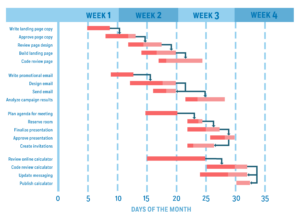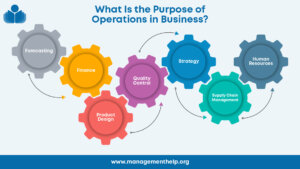KEEPING THE WOLVES AT BAY — The Ever-Present Conundrum
The recent events in the financial sector, while perhaps skirting the edges of legality, certainly highlighted the issue of the ethical dilemma often faced when increasing pressure to perform, deliver and maximize profitability butts up against moral and ethical (as well as legal) compliance. Certainly in the US, the headlines indicate that many of the players involved simply set aside their moral and ethical compass when making choices.
Project managers often encounter similar types of conflicts as we have to balance the various demands flying from different directions all the while maintaining focus on managing the scope, schedule and budget aspects of our projects and program requirements.
ORCHESTRA CONDUCTOR or SLAVE to MANY MASTERS–Can you be both?
It is quite common for a Project Manager to be given marching orders based upon ‘sales driven’ documents with estimates, requirements, contracts, etc., which are more aligned with the objectives of the delivery organization (staffing & revenue targets, utilization needs ,billable hours, larger and longer engagements, ongoing work, etc. ) and not necessarily fully in the client’s best interest.
Service & Delivery organizations that consider Project Managers primarily revenue generating, billable resources and not part of a standard delivery management and oversight methodology, usually put the PM in the conflicting position of ‘singing for their supper’ often to justify their own very existence on a particular engagement.
This forces said PM to make choices about resources, estimates, requirements, overall effort, risk factors, and even the overall validity and value of a project as a whole, putting the PM smack in the middle of a conflict between their obligation to the end-clients best interest (as stated in the PMI Code of Ethics and Standards) and the interests of their employer or contracting agency and in the end, perhaps even their own financial survival.
It is true that that certainly some processes within the a standard PMI methodology ( and perhaps more so within PRINCE2, although I’ve had limited exposure to PRINCE) which, if actually utilized properly might lead to more objective evaluation, assessment and independent ‘management’ of projects.
However, from both my direct and observational experiences of the last 20+ years, it seems that, at least within the technology space, we as PM’s are often handcuffed from forcefully exercising our moral & ethical responsibilities being that we are in the conflicted position of serving many different masters.
Recently, during the ‘interview’ process with a consulting agency, they posed some case study/essay questions to me as part of their process of deciding what consultants they bring onboard. One case study with the assignment to create the ‘plan and approach’ for the client, posed the following scenario:
-
Client A is a mid-sized company that does about 6-8 internal significant projects per year (above 500K, per their classification).
-
Total IT budget outside of those projects is an additional 11 million.
-
Company leadership has requested an assessment and proposal for implementing a PMO within their organizations.
-
One of the issues raised by the senior leadership team of the client is that they are not certain what the status of the projects are at any given time, however the projects, on the whole, usually come within 10% of the time and budget constraint.
-
The other significant issue raised by leadership was that ‘they do not feel that they are spending their time & money in alignment with their company’s most important strategic and tactical goals as well as in alignment with their marketing strategy.
In my response, I immediately locked in on the last bullet point as a critical and fundamental issue plaguing this fictional client. While it is true that a PMO could certainly have, within its governance processes, a ‘gate’ that would check for alignment to strategic and tactical goals, until the Senior Leadership of Company A mapped them out and made certain that they had them clearly defined so IT WAS CLEARLY AND EASILY DESCERNABLE when they were not in alignment, the PMO would just be a rudderless ship, to manage projects more effectively and add additional overhead for things which it seems, based upon the high rate of projects success, this company already does well. They already have good processes and project managers and actually, good project performance and results. It is likely they are not focusing their energy and resources on the correct projects because leadership has not clearly defined the ‘road ahead’—something a PMO, in and of itself, would not necessarily fix.
I stated that I would recommend setting aside the PMO assessment, planning and implementation and instead focus with the senior leadership team on some Strategic Planning, Messaging and Organizational alignment to make sure the IT group had the correct view into those plans. Once that was done, then it might be time to see if the cost/benefits of a PMO (which can be tremendous) would be worth it.
I was told that while my logic made sense, my decision could cost MY COMPANY( the hiring company), hundreds of thousands in revenue and was not the focus they ‘needed’. Their response was that once we had secured the engagement with the client, we could steer the engagement in that direction and let the client ‘figure it out on their own’. Seemed to me like I was misleading the client but hey, go figure.
Needless to say, I did not get the contract and would not have taken it had it been offered as this is the fundamental quandary which I think often leads to a lack of credibility for Project Managers in the first place.
My question to the readers would be this?
What methodologies can best be employed to avoid becoming Slave to Many Masters, all of whom try to work to keep the upper hand and work against each other and not in concert? How do you make sure that you are an Orchestra Conductor, keeping all the parts working together towards a great performance, to a perfect end where all are satisfied.
What methods do you use to create the great crescendo to the perfect ending?
—————————
For more resources, see the Library topic Project Management.
—————————
 Sections of this topic
Sections of this topic















